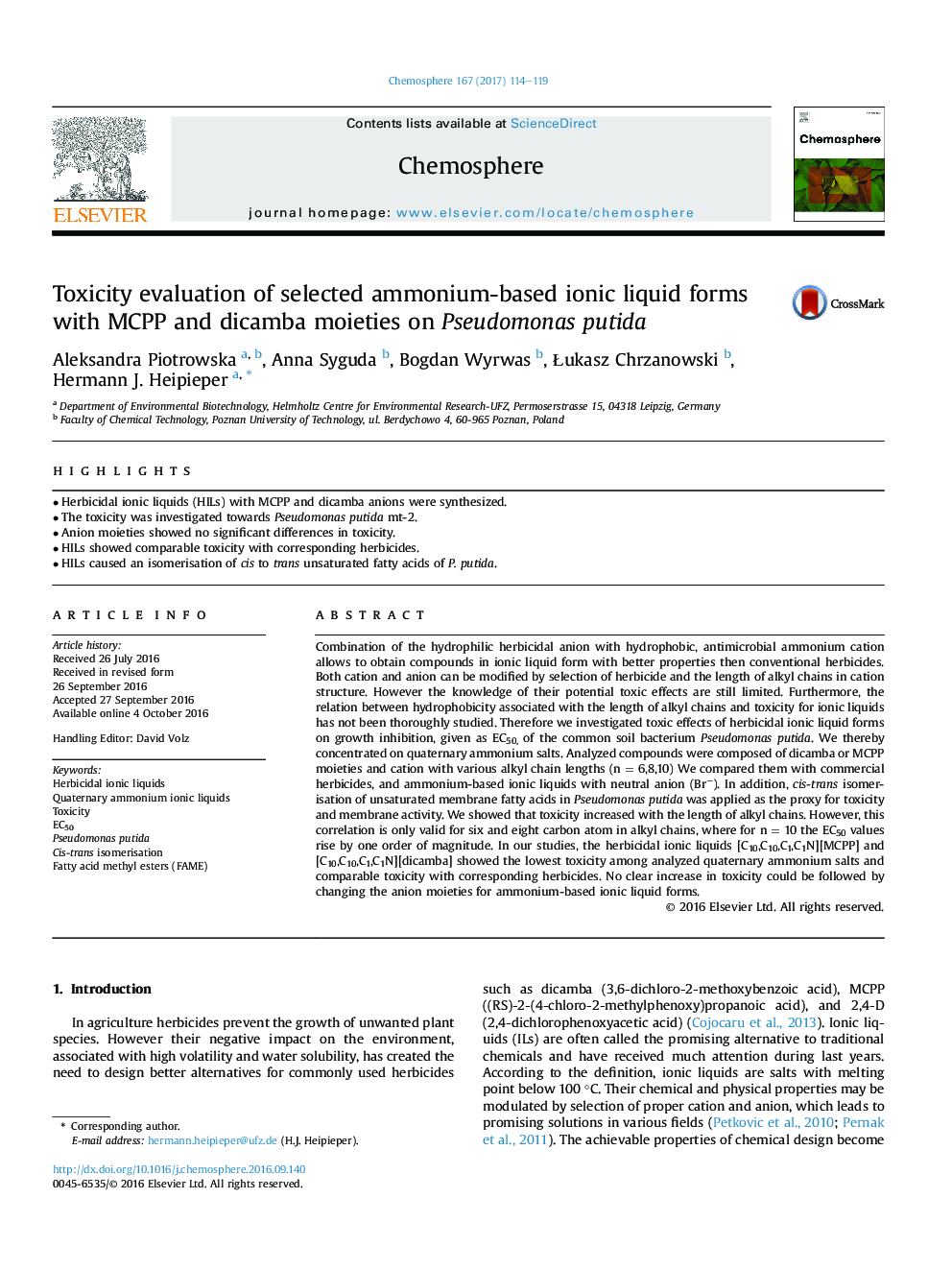| Article ID | Journal | Published Year | Pages | File Type |
|---|---|---|---|---|
| 6305928 | Chemosphere | 2017 | 6 Pages |
â¢Herbicidal ionic liquids (HILs) with MCPP and dicamba anions were synthesized.â¢The toxicity was investigated towards Pseudomonas putida mt-2.â¢Anion moieties showed no significant differences in toxicity.â¢HILs showed comparable toxicity with corresponding herbicides.â¢HILs caused an isomerisation of cis to trans unsaturated fatty acids of P. putida.
Combination of the hydrophilic herbicidal anion with hydrophobic, antimicrobial ammonium cation allows to obtain compounds in ionic liquid form with better properties then conventional herbicides. Both cation and anion can be modified by selection of herbicide and the length of alkyl chains in cation structure. However the knowledge of their potential toxic effects are still limited. Furthermore, the relation between hydrophobicity associated with the length of alkyl chains and toxicity for ionic liquids has not been thoroughly studied. Therefore we investigated toxic effects of herbicidal ionic liquid forms on growth inhibition, given as EC50, of the common soil bacterium Pseudomonas putida. We thereby concentrated on quaternary ammonium salts. Analyzed compounds were composed of dicamba or MCPP moieties and cation with various alkyl chain lengths (n = 6,8,10) We compared them with commercial herbicides, and ammonium-based ionic liquids with neutral anion (Brâ). In addition, cis-trans isomerisation of unsaturated membrane fatty acids in Pseudomonas putida was applied as the proxy for toxicity and membrane activity. We showed that toxicity increased with the length of alkyl chains. However, this correlation is only valid for six and eight carbon atom in alkyl chains, where for n = 10 the EC50 values rise by one order of magnitude. In our studies, the herbicidal ionic liquids [C10,C10,C1,C1N][MCPP] and [C10,C10,C1,C1N][dicamba] showed the lowest toxicity among analyzed quaternary ammonium salts and comparable toxicity with corresponding herbicides. No clear increase in toxicity could be followed by changing the anion moieties for ammonium-based ionic liquid forms.
